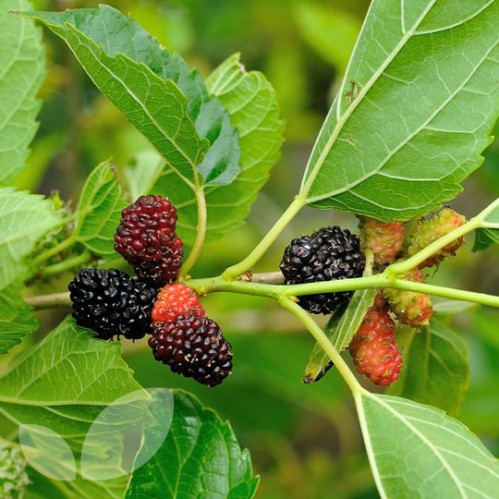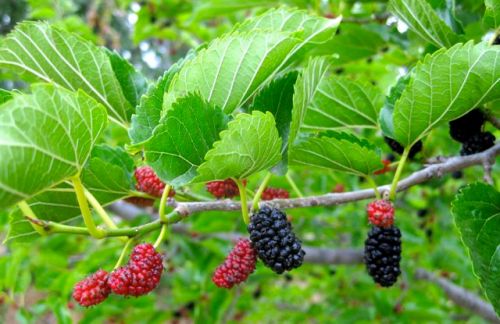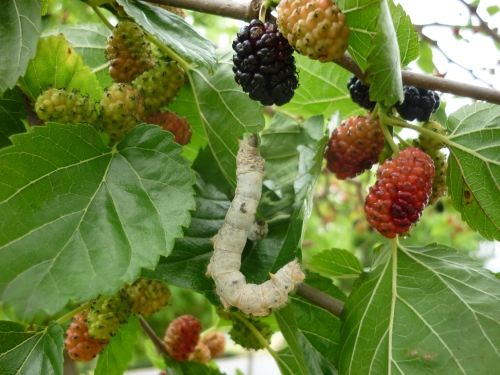
One interesting fruit tree is the mulberry, which can be trained as a bonsai, or grown also as an ornamental tree and a favourite fruit tree for children. Mulberries, which is commonly known as Morus nigra or Morus indica, depending on the species, is a popular plant provinces with multiple yet not well practiced uses. The genus Morus comprises about 10-16 species of deciduous trees, usually growing wild and also under cultivation both in the temperate and tropical regions. The tree belongs to the plant family Moraceae. Mulberries are fast-growing when young, but soon become slow-growing and rarely exceed 10–15 m (33–49 ft) tall, making it a small to medium sized tree.

Edible red and dark violet fruits are sweet
Economically, the tree is commonly grown to produced leaves which are usually fed to silk worms for the manufacture of silk threads. The mulberry is a popular ornamental plant due to its colourful reddish to blackish multiple fruit, which is edible, most especially to children and adults alike. The fruit can also be used to manufacture food sauces, fruit juices, fruit wine, tarts, jams and pies. Immature fruits are white, green, or pale yellow. In most species the fruits turn pink and then red while ripening, then dark purple or black, and have a sweet flavour when fully ripe. The fruit also produce pigments from its anthocyanins or sap which used as food color and for fabric tanning. It has also medicinal value, as it is valued for the treatment of ringworm, its fruit is very rich in vitamins, minerals and also has plenty of anti-oxidants.
Mulberries is widespread in the Philippines, China, Japan, India, Myanmar, Korea, Himalayas, Africa, Libya and Iran. Some horticultural organizations are even making breeding projects to produce excellent Mulberry cultivars and hybrids for food production and for commercial purposes.
Mulberries are easy to grow. It loves full open sun and will benefit from regular watering and fertile loamy soils. On the other side, Mulberries are resistant to drought and poor soil, and often they can survive and grow wild with minimal care. However, for cultivation purposes, they will benefit from sufficient fertilization and care. Mulberries can be grown from seeds, and this is often advised as seedling-grown trees are generally of better shape and health, but they are most often planted from large cuttings which root readily during the rainy season. Trees are usually planted in distances of 6 feet by 6 feet in rows, and often pruned regularly every year to make it compact. Pruned branches can be cut and used to make durable baskets for livelihood. Ecologically, they are important host plants for butterflies.

Silk worm feeding on the leaf of the mulberry
Mulberries are certainly a unique addition to the home garden or in the farm as it is a source of instant edible and nutritious fruits. A small or medium sized tree decorated with thickly laden with yellow, red and black fruits is certainly a sight to behold especially to children and it is a good decoration. Commercially, mulberries can also be trained into bonsai, its fiber used to manufacture paper and also for basketry, and its leaves as a feed for silkworm in the manufacture of silk textile.
Powered by:

Leave a comment